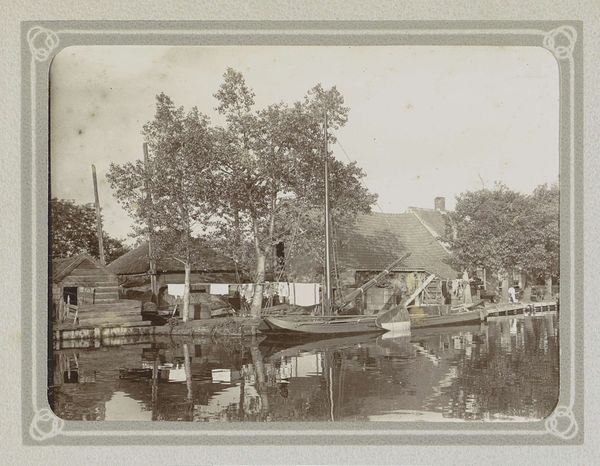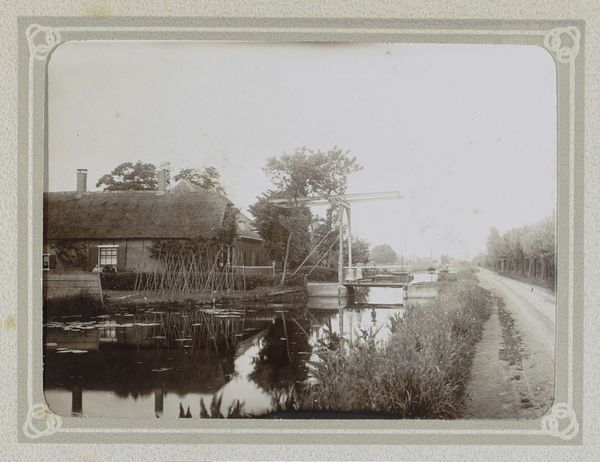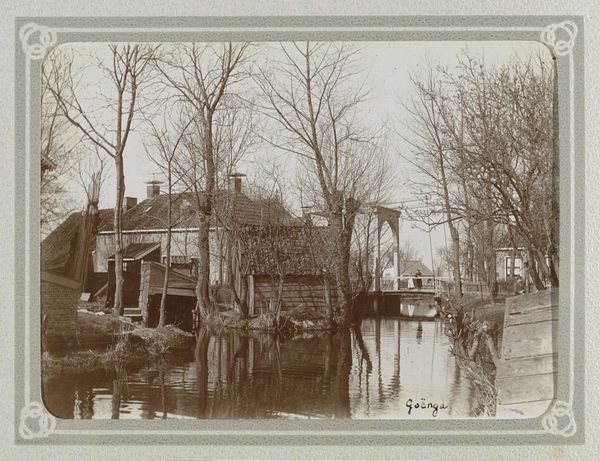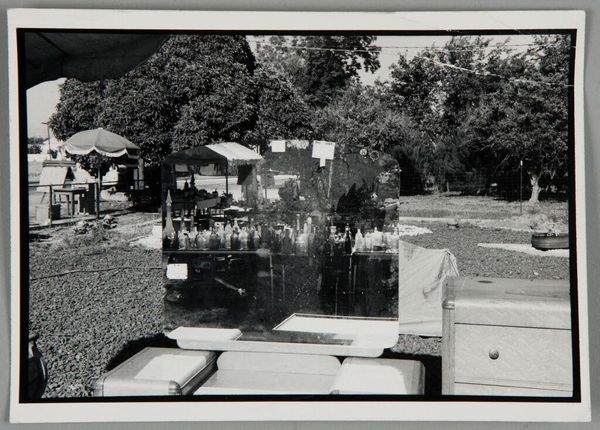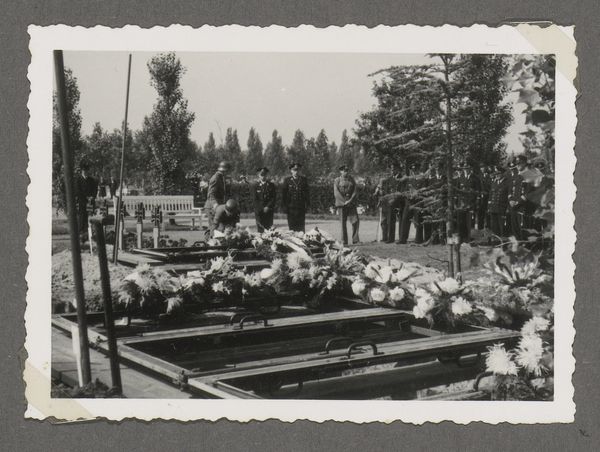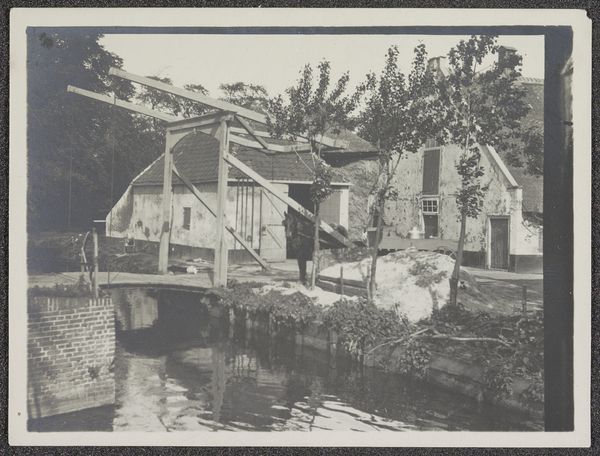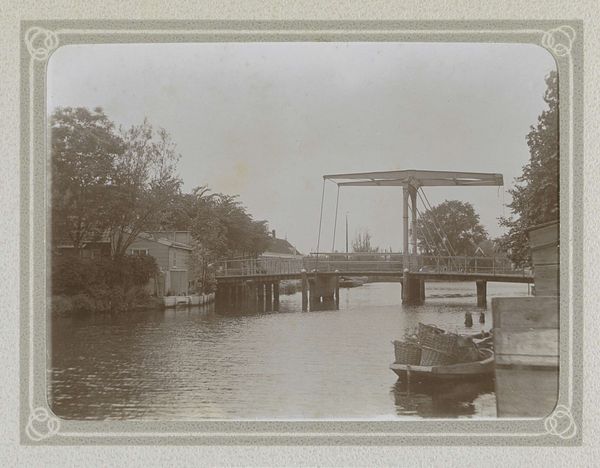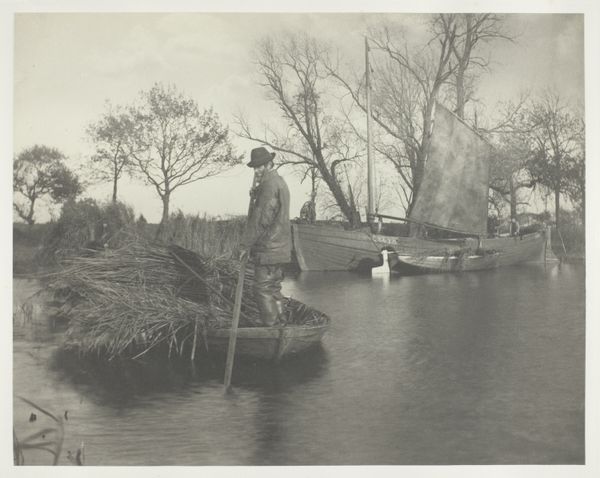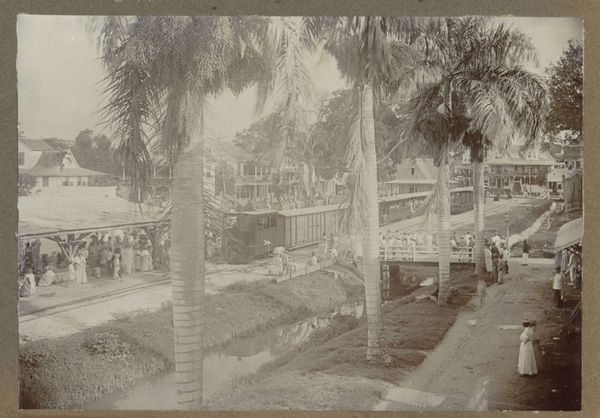
photography, gelatin-silver-print
#
still-life-photography
#
black and white photography
#
black and white format
#
photography
#
gelatin-silver-print
#
monochrome photography
#
history-painting
#
monochrome
Dimensions: height 3 cm, width 6 cm
Copyright: Rijks Museum: Open Domain
Editor: This gelatin-silver print, "Twee Wehrmacht militairen bij een kraampje," taken sometime between 1940 and 1948, features two German soldiers at what looks like a small food stand. The overall feel is rather mundane, contrasting with the historical weight of the era. What visual symbols strike you when you look at it? Curator: The mundanity, as you put it, is exactly where the power lies. The food stand, with its Dutch signage – "Het Fruitpaleis," ironically – speaks volumes. It highlights the forced integration, the imposition of one culture upon another. And consider the hay bale in the background - a traditional symbol of rural life and prosperity. Juxtapose that with the presence of the Wehrmacht, and we see a visual tension, a cultural friction. Doesn't it suggest an interruption of the natural order? Editor: That's a great point about the "Fruitpaleis" signage being Dutch and the soldiers being German! So, are you saying that the photograph subtly portrays the occupation through everyday imagery? Curator: Precisely. Think about the psychological impact. For the Dutch people, seeing German soldiers casually buying fruit under a sign advertising a 'palace of fruit' might have evoked feelings of subjugation, of lives irrevocably changed. The image carries a suppressed emotional weight, doesn’t it? We aren't presented with grand battles, but a slow, grinding cultural shift represented in the most ordinary terms. Editor: It's like the photographer captured the quiet horror of the occupation. The symbols we take for granted – a fruit stand, a haystack – suddenly become loaded with meaning. Thanks, I never would have looked at it that way! Curator: The everyday can often be the most revealing carrier of cultural memory. Examining these symbols helps us understand history, not as a series of grand events, but as lived experiences.
Comments
No comments
Be the first to comment and join the conversation on the ultimate creative platform.


